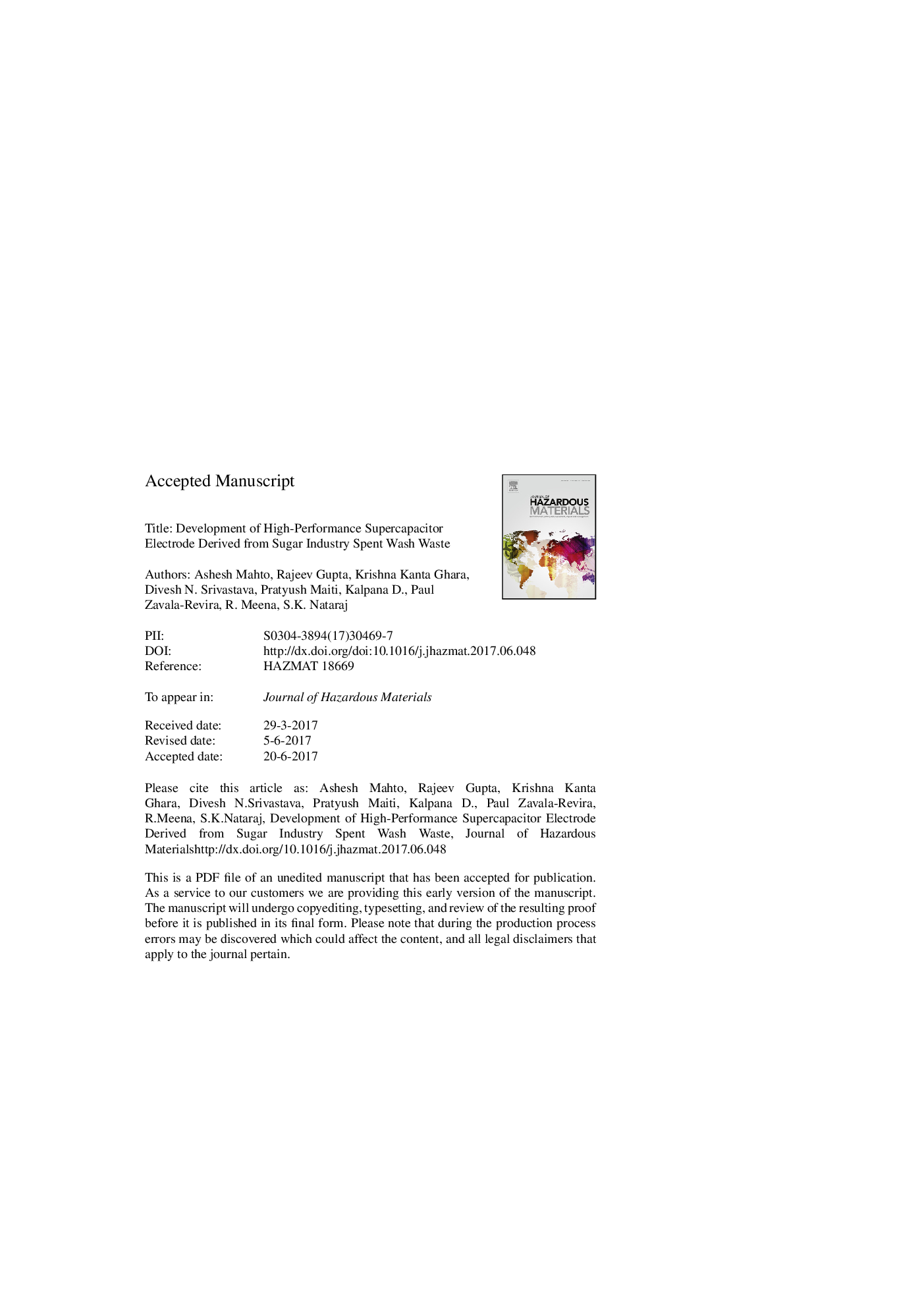| کد مقاله | کد نشریه | سال انتشار | مقاله انگلیسی | نسخه تمام متن |
|---|---|---|---|---|
| 4979207 | 1453023 | 2017 | 41 صفحه PDF | دانلود رایگان |
عنوان انگلیسی مقاله ISI
Development of high-performance supercapacitor electrode derived from sugar industry spent wash waste
ترجمه فارسی عنوان
توسعه الکترود فوق کارباکاری که از صنعت شکر استخراج شده است، صرف شستشوی زباله ها می شود
دانلود مقاله + سفارش ترجمه
دانلود مقاله ISI انگلیسی
رایگان برای ایرانیان
موضوعات مرتبط
مهندسی و علوم پایه
مهندسی شیمی
بهداشت و امنیت شیمی
چکیده انگلیسی
This study aims at developing supercapacitor materials from sugar and distillery industry wastes, thereby mediating waste disposal problem through reuse. In a two-step process, biomethanated spent wash (BMSW) was acid treated to produce solid waste sludge and waste water with significantly reduced total organic carbon (TOC) and biological oxygen demand (BOD) content. Further, waste sludge was directly calcined in presence of activating agent ZnCl2 in inert atmosphere resulting in high surface area (730-900Â m2Â gâ1) carbon of unique hexagonal morphology. Present technique resulted in achieving two-faceted target of liquid-solid waste remediation and production of high-performance carbon material. The resulted high surface area carbon was tested in both three and two electrode systems. Electrochemical tests viz. cyclic voltammetry, galvanostatic charge-discharge and impedance measurement were carried out in aqueous KOH electrolyte yielding specific capacitance as high as 120Â FÂ gâ1, whereas all solid supercapacitor devised using PVA/H3PO4 polyelectrolyte showed stable capacitance of 105Â FÂ gâ1 at 0.2Â AÂ gâ1. The presence of transition metal particles and hetero-atoms on carbon surface were confirmed by XPS, EDX and TEM analysis which enhanced the conductivity and imparted pseudocapacitance to some extent into the working electrode. The present study successfully demonstrated production of high-performance electrode material from dirtiest wastewater making process green, sustainable and economically viable.
ناشر
Database: Elsevier - ScienceDirect (ساینس دایرکت)
Journal: Journal of Hazardous Materials - Volume 340, 15 October 2017, Pages 189-201
Journal: Journal of Hazardous Materials - Volume 340, 15 October 2017, Pages 189-201
نویسندگان
Ashesh Mahto, Rajeev Gupta, Krishna Kanta Ghara, Divesh N. Srivastava, Pratyush Maiti, Kalpana D., Paul-Zavala Rivera, R. Meena, S.K. Nataraj,
